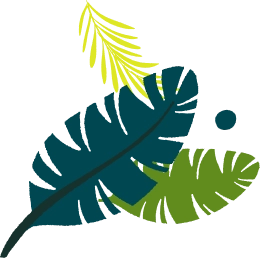


I first heard about Pu Luong from someone (who was traveling around Vietnam) at a Hanoi cafe who wouldn't stop talking about rice terraces and quiet villages. I think everyone knows of a person like that who describes a place like they discovered it themselves. Turns out he was onto something.
Four hours southwest of Hanoi sits a nature reserve in Thanh Hoa Province. Most people heading south just fly over it. Those who stop actually find something different from the rest of Vietnam. No tour groups crowding the trails. No constant noise. Just farmers working their fields and locals going about their day like outsiders barely exist (I am not complaining here!)
The reserve covers 17,662 hectares and is genuinely beautiful. Limestone mountains, rice terraces, tropical forests everywhere. But what gets to you is just how normal it feels. You're not gawking at a postcard version of Vietnam or just another touristy activity. You're just existing in a place where life hasn't changed much in decades…
I've talked to plenty of people who came here and then stayed longer than planned. Not because there's a list of things to check off, but because the place has this pull to it.
The Thai and Muong ethnic groups have lived here for generations. They work the same way their ancestors did. Water buffalo in the fields. Hand harvested rice. Terraces carved into hillsides that follow lines worked out over centuries. It's not preserved for tourists. It's just how things are.
Three valleys make up most of the reserve, surrounded by limestone mountains that feel massive when you're standing at the bottom looking up. Tropical forest covers roughly two-thirds of the place. The rice fields are where you get those photos that make people ask… is that even real? when you show them.
But the real thing that matters is simpler. You can feel it when you first arrive. This place hasn't been turned into a commercial travel destination yet like countless others such as Halong bay, Sapa etc. That's the appeal.
The drive isn't too hard which is good because once you're here since the whole point is to not rush.
Private car or minivan is the move if you want to get there properly. Four to five hours from Hanoi costs around 1,500,000 to 1,700,000 VND (roughly 60 to 70 dollars) if you book a vehicle. You arrive rested and ready to actually spend time there rather than still recovering from the journey.
Tours from Hanoi's Old Quarter often arrange minivans where you split costs with other travelers. Usually between 300,000 and 500,000 VND per person depending on group size. Some tours stop in Mai Chau on the way if that interests you.
By motorbike works if you've ridden in Vietnam before and aren't bothered by mountain roads. Rentals run 100,000 to 150,000 VND per day (4 to 6 dollars).
Three main routes exist:
Bus is cheapest at around 300,000 VND (11 dollars) but honestly buses to Pu Luong are limited and unpredictable. Ask at your hotel in the Old Quarter and they might find one, but I'd avoid relying on it.
Once you're here just grab accommodation sorted for your first night. After that you can wander around and find a place you like.
Pu Luong works year round but the experience changes pretty significantly depending on when you go.
May and June bring everything to life. The rice paddies look almost unnaturally green. Forests are thick and lush and the first harvest season means villages are active and buzzing. It's warm and humid, usually 25 to 35 degrees Celsius (77 to 95 Fahrenheit) depending on the day. Great for photos and getting that jungle feeling everyone wants.
September and October is honestly the best time if you can swing it. The second rice harvest has finished so you get the golden terraces everyone posts pictures of. The weather cools down to 18 to 28 degrees Celsius (64 to 82 Fahrenheit). It's still active enough that people are working their fields, so you see real life rather than just an empty landscape. Colors are just incredible...
November through February gets quiet and cool. Temperatures drop to 10 to 18 degrees (50 to 64 Fahrenheit). Mornings are often misty, which sounds atmospheric in theory and mostly is in practice. Some find it peaceful. Others find it a bit isolated. It depends on your mood really.
March and April is fine. Some rice fields might be lying fallow but it's warm without being oppressive yet. Usually 18 to 25 degrees (64 to 77 Fahrenheit). You skip early summer crowds while the weather's still nice.
Just skip June through August if you can. The heat gets intense, humidity is ridiculous, and weekend tourists from Hanoi descend on the place. Trails turn to mud from heavy rains too, which makes hiking a lot less fun and occasionally dangerous.
Most people come here to walk through the landscape and fair enough. The trails wind through rice fields, villages, bamboo groves, and up to spots where the view actually makes you stop and just stand there for a bit.
For casual walks, you can start early around 6 AM and just walk through the rice fields on the flat bits. You'll see farmers heading out, buffalo being moved, kids going to school. Stop at villages and chat with people. Drink tea. Sit for an hour and watch nothing happen. This is totally enough.
If you want a proper hike, the route from Kho Muong to Hieu Waterfall is the standard recommendation. It takes about 7 to 8 hours, moderately challenging, and you actually see things. You pass the Don market on Friday and Sunday if you time it right. There's a bat cave (Kho Muong Cave) worth checking out. Bamboo forests everywhere. Then you finish at a waterfall with pools you can swim in. It feels like you've done something worthwhile when it's finished.
For serious hikers, the Pu Luong Summit trek hits 1,700 meters and takes you through areas that don't get many foreigners. Routes vary but you're looking at long days through remote villages and past limestone formations. These aren't technically difficult but they're tiring and you need decent fitness.
Hire a local guide. I can’t stress this enough. Trails aren't always marked clearly, guides know the shortcuts and best viewpoints, and they navigate villages in a way that's actually respectful. They also rely on this income directly. It usually costs 150,000 to 300,000 VND per day (6 to 12 dollars).
Everyone mentions Hieu Waterfall and it's worth mentioning for real. It's more than just one waterfall…a series of cascades dropping down a valley, creating pools where you can actually swim. The water is cold and clean and there's something restorative about floating around in a natural pool surrounded by forest.
Most places you stay it takes 1 to 2 hours to hike there. The trail goes through rice fields and villages so you see real life along the way rather than just trekking through nature.
Go early morning. By afternoon other groups show up and the quiet gets broken. Early morning also means you catch farmers working and the light is actually good for photos instead of harsh and washed out.
This is where it gets interesting. The Thai and Muong people here have lived this way for generations. You're not visiting a cultural attraction rather moving through their actual lives.
Kho Muong is probably the most known village. Black Thai people, sits in a spectacular valley surrounded by limestone mountains. There's a cave worth exploring if you're into that. The village itself welcomes visitors in a way that still feels genuine rather than performative.
Hieu village is more spread out and less set up for tourists. Feels like moving through a place where people are actually living rather than expecting foreign visitors. It's the main access point to the waterfall.
The smaller hamlets you might pass through or stay in like Bam, Pon, or Uoi villages are where you actually feel it. Kids are genuinely curious about foreigners. Homestay owners are often just farmers who built a few extra rooms. Your money goes directly to people who need it.
Prices range wildly from super cheap (5 to 10 dollars per night in basic local homestays) to more upmarket (50 to 100 dollars for eco-resorts with amenities).
Local family homestays are the cheapest and actually the most authentic. You're in someone's home. You eat food they cooked at home. You get to see how people actually live. The trade off is basic stuff: shared bathrooms usually, simple beds, maybe no wifi. If you travel for the experience rather than comfort, these are pretty special.
Boutique homestays and eco-resorts started appearing in recent years. These have proper bathrooms, nicer beds, sometimes pools. Usually run by people from Hanoi who understand what travelers want. More comfortable but less authentic feeling. Budget 25 to 60 dollars per night.
Places like Pu Luong Riverside Lodge sit right by the waterfall which is convenient. Pu Luong Eco Garden is decent. Various treehouses are built around the place. But walking around and picking somewhere you like often works better than booking ahead. Most places have rooms unless it's a holiday weekend like Tet!
Book your first night so you know where you're going. After that explore and move around if you want.
Local food here is actually good and genuinely cheap. If you ask most homestays will do you meals, usually 50,000 to 100,000 VND (2 to 4 dollars) for a full lunch or dinner cooked at home.
Hill chicken grilled with salt and lime is legitimately excellent. Water buffalo if it's prepared right is tender and flavorful. Mountain snails grilled with dipping fish sauce are weirdly addictive once you try them. Fresh bamboo shoots, morning glory from the fields, seasonal vegetables all taste like where they're from rather than what a restaurant thought tourists wanted.
Meals usually come with sticky rice, some stir-fried vegetables, and meat or fish. It's simple, seasonal, and actually tastes like the place it comes from. The water wheels everywhere aren't just decoration either. They help with irrigation and the engineering is clever. People here have been doing sustainable agriculture for centuries.
Shoes: Hiking boots or solid sneakers work. Not flip-flops. The terrain needs actual footwear.
Clothes: Quick-dry pants or hiking shorts, light rain jacket (even dry season gets afternoon showers sometimes), long-sleeve shirt for sun and insects. Locals wear long sleeves for a reason.
Water and sun screen: Bring way more water than you think. At least 2 liters for a full trek day. Sunscreen matters. Insect repellent too.
Other things: A decent camera if you care about photos. A good phone camera works fine (Pixels, galaxy and iphones). Daypack for trekking. Comfortable shoes for wearing around the homestay since you'll take your hiking boots off constantly.
Money: Bring cash in VND. ATMs exist but not everywhere. Cards don't work at most homestays or local restaurants. Half a million to a million VND (20 to 40 dollars) covers daily expenses if you're traveling cheap.
Mindset: Be patient with language barriers. Most homestay owners speak some English. Genuine interest in people matters more than ticking boxes on a checklist.
Is it safe to visit Pu Luong reserve?
Yes, it's genuinely safe. The villages are peaceful, locals are friendly, and violent crime against tourists basically doesn't happen. Standard travel sense applies. Don't leave valuables just sitting around. Be smart at night. It's actually one of the safer places to travel in Southeast Asia.
How long should I stay?
Two to three days is the minimum to get a real feel. You could spend a week without getting bored. Four to five days is ideal if you want to do multiple treks and actually slow down instead of rushing through.
Do I need to be really into hiking?
Not really. Walk easy trails through fields, visit villages, hang out at a homestay, watch the landscape. Not every second needs to be an adventure. Half the appeal is just being in the place.
When do things get crowded?
Weekends and Vietnamese public holidays bring domestic tourists from Hanoi. Weekdays are noticeably quieter. Early morning is always quieter than afternoon.
Do I need a guide in Pu Luong?
For easy village walks through open terrain, probably not. For serious trekking or navigating remote areas, yes. For everything else, it depends on your comfort level but hiring a guide helps you avoid getting lost and supports local income directly.
Pu Luong isn't undiscovered anymore. More tourists find it every year. More resorts are being built. At some point it might become like Sapa (crowded, commercialized, kind of sad). Could happen, might not, but it could.
This is one of the places where going sooner rather than later actually matters. Not because of bragging rights or being ahead of the trend, but because the thing that makes this place special is that it still feels authentic and not fake. That quality doesn't last forever.
Come for the rice terraces and waterfalls. Stay for the quiet, the people, the feeling that you've stepped outside regular time for a few days. That's what you get here.
Get the latest information about our tours and special offers!